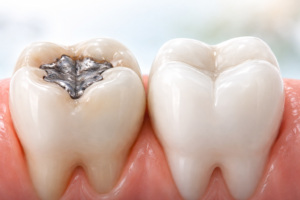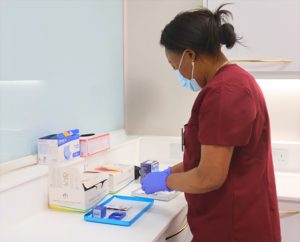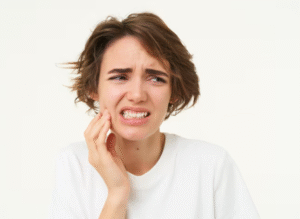The Chinese Meridian Chart: How Your Teeth Affect Your Whole Body
When most people think about oral health, they focus on preventing cavities, keeping their smile bright, and visiting the dentist regularly. But in traditional Chinese medicine (TCM), your teeth are seen as much more than tools for chewing or features of a nice smile, they are considered windows into your body’s overall health.
This idea is beautifully illustrated in what is known as the meridian tooth chart (also known as a tooth-organ chart), which you can find in our surgery at Optimal Dental Health. A map showing the energetic connections between each tooth, specific organs and systems in the body.
Although the meridian chart may be unfamiliar to many, it has been used in Chinese healing traditions for centuries. It works on the same principles as acupuncture: the belief that the body has a network of energy pathways, or meridians, that connect different areas together.
According to traditional Chinese medicine, when energy flows freely along these meridians, the body stays healthy. When the flow is blocked or imbalanced, illness or discomfort may develop.
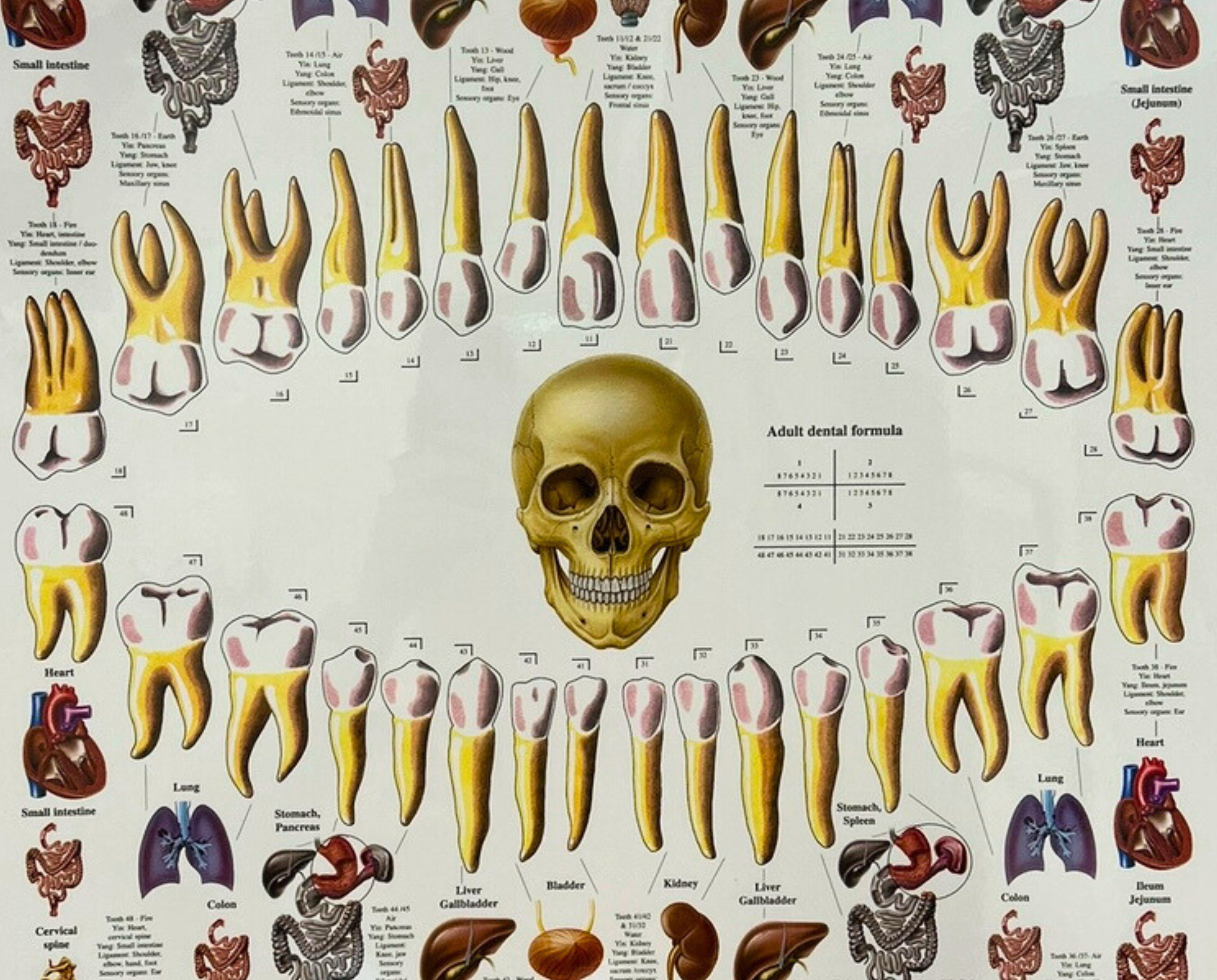
Every Tooth Tells a Story
On a meridian chart, each tooth is linked to a specific meridian that also connects to other parts of the body. For example, certain front teeth are associated with the kidney and bladder meridians, while molars at the back of the mouth may be linked to the stomach and spleen meridians.
This means that, in theory, a problem in a tooth could be related to or even signal an imbalance in a corresponding organ system. For instance, in traditional Chinese medicine thinking, recurring issues with a particular tooth might prompt a practitioner to consider whether the related organ meridian is under stress.
Conversely, problems in the body, such as digestive troubles or chronic sinus issues, might show up as sensitivity or weakness in a specific tooth. This connection is not about replacing conventional dental diagnosis but about seeing health through a wider, interconnected lens.
The Mouth as a Mirror of Health
Even without the lens of Chinese medicine, modern research supports the idea that the mouth and body are closely linked. Conditions such as gum disease have been connected to heart health, diabetes, and systemic inflammation.
The meridian chart adds another layer to this understanding, suggesting that our teeth can act like an early warning system for other imbalances.
For example, the upper first molars. In the meridian chart, they are connected to the stomach and spleen. If someone experiences repeated issues in this area, such as a tooth that never quite feels right despite treatment, it might encourage further investigation into digestion or nutrient absorption.
Similarly, lower incisors are linked to kidney and bladder meridians, so tooth troubles here might be considered alongside urinary or lower back issues in practice.
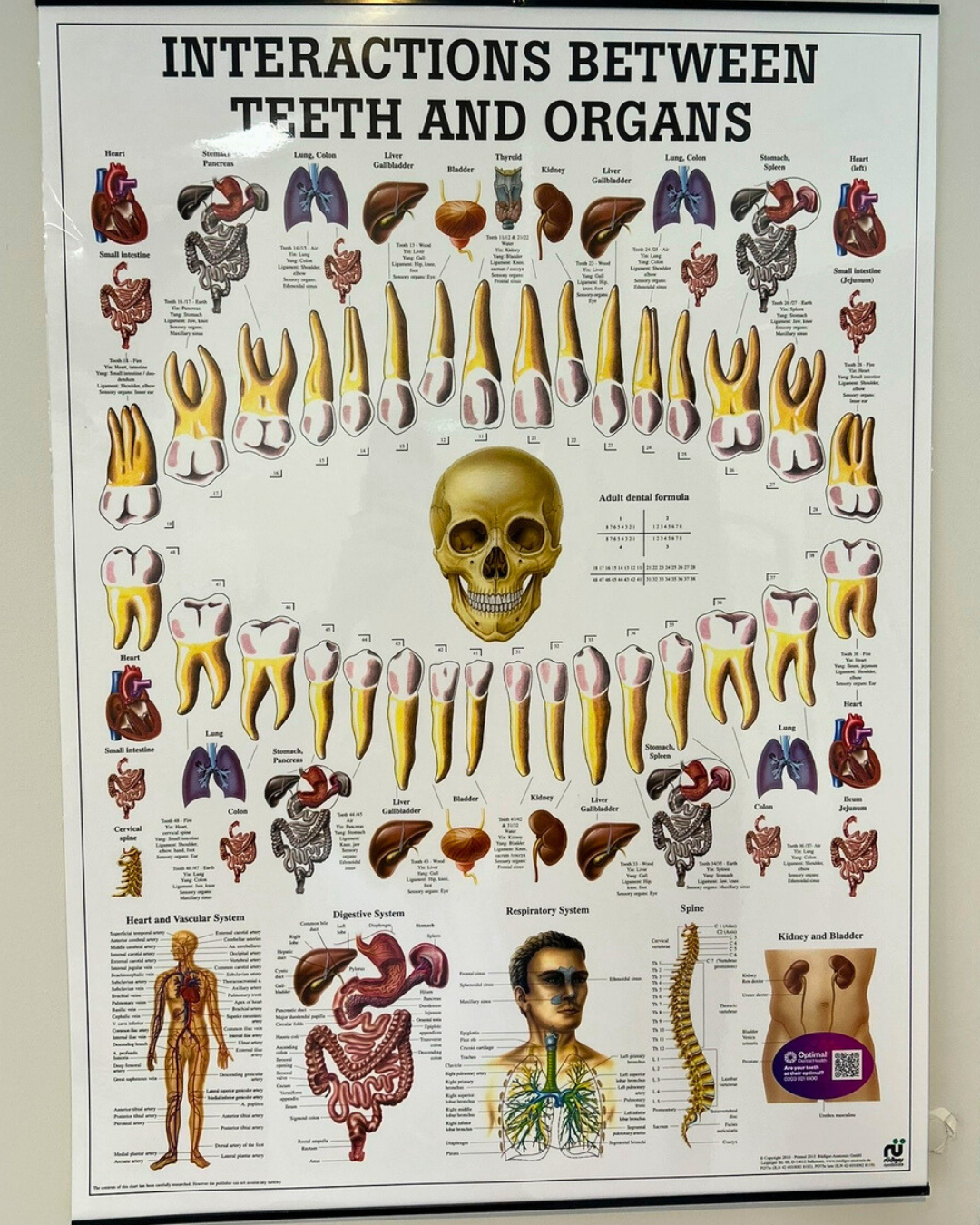
A Holistic Approach to Dental Care in London
Incorporating the meridian chart into dental practice doesn’t mean abandoning modern dentistry. Rather, it can be seen as an additional perspective, one that encourages you to view oral health as part of the bigger picture of wellness.
Dentists and holistic practitioners who use this approach may work together, ensuring that dental treatments are paired with support for the patient’s overall health, such as homeopathy, nutrition, sleep health and more.
For example, someone with a toothache might receive the appropriate dental intervention, but they might also be encouraged to look at diet, stress levels, and other lifestyle factors that could be affecting the relevant meridian and its connected organs.
Why Our Patients Find It Fascinating
Many of our patients are intrigued by the meridian chart at Optimal Dental Health, because it offers a new way to think about their own health. It can be empowering to see that a dental concern might be connected to something beyond the mouth, opening opportunities for preventive care and lifestyle changes.
It’s also a gentle reminder that your body works as a whole, not in isolated parts. Just as a healthy mouth supports a healthy body, a healthy body helps maintain strong teeth. By appreciating this relationship, you may feel more motivated to care for both your oral and general wellbeing.
Balancing Tradition and Science
While the meridian chart comes from traditional Chinese medicine and is not universally accepted by mainstream dentistry, it can serve as a valuable educational tool. It encourages people to be more aware of subtle changes in their body and to seek care sooner, whether that’s from a dentist, GP, or another health professional.
At its heart, the chart reflects a philosophy that resonates across many cultures: prevention is better than cure, and if noticed early enough, can be corrected before they grow into bigger problems or concerns.
Wisdom and Modern Dental Care
The Chinese meridian tooth chart offers a fascinating bridge between ancient wisdom and modern dental care. Whether you view it as a diagnostic tool, a conversation starter, or simply a reminder that the body is deeply interconnected, it can help you think more holistically about their health.
Next time you’re in the dental chair with one of our dentists, you might see your teeth not just as part of your smile, but as part of a much larger story, one that connects every part of you, from head to toe.
Ready to discover what’s connected?

Book a 15-point dental health check with Dr James Goolnik at Optimal Dental Health in Baker Street. You’ll be able to visit his surgery and check out our meridian chart for yourself!
Book today by calling us on 020 3921 1000 or email us at hello@optimaldental.co.uk.
Alternatively, you can book online today here. We can’t wait to meet you.
